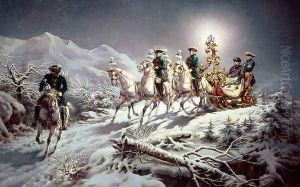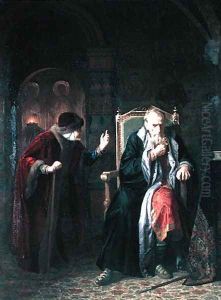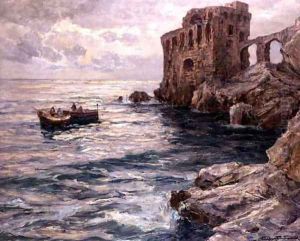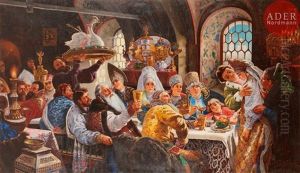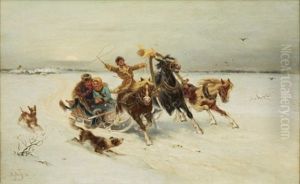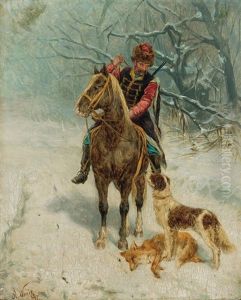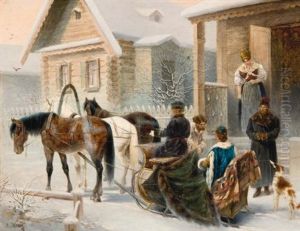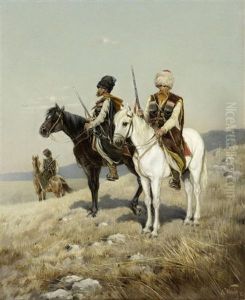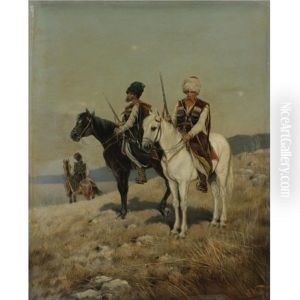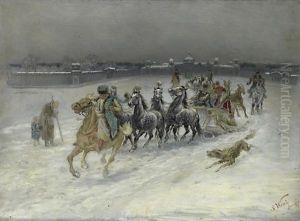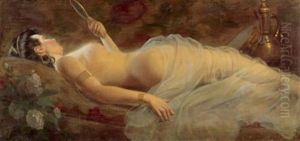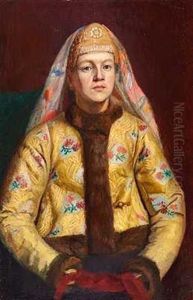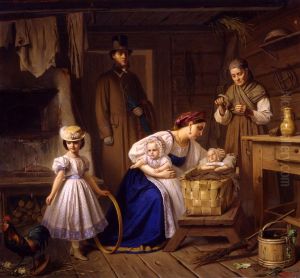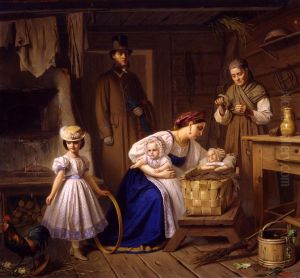Karl Gottlieb Wenig Paintings
Karl Gottlieb Wenig, also known as Carl Gottlieb Wenig or Karl Wenig, was a Russian historical and genre painter of German origin. Born on February 26, 1820, in Riga, which was then part of the Russian Empire (now Latvia), Wenig's artistic journey began in the historic city, which had a significant German community and cultural influence. Not much is detailed about his early life, but it is known that he developed his artistic skills in the culturally rich environment of the Baltic region.
Wenig's approach to art was shaped by his education and the broader European art scene of the 19th century. He enrolled at the Imperial Academy of Arts in Saint Petersburg in 1839, where he studied under the guidance of renowned artists such as Karl Bryullov, who was instrumental in bringing the Italianate Romanticism to Russia. Wenig was a dedicated student, and his talents were recognized with several awards and medals during his time at the Academy, including a gold medal for his painting 'Samson and Delilah' in 1847, which allowed him to travel abroad for further studies.
Taking advantage of this opportunity, Wenig embarked on a journey through Europe, a traditional tour for many emerging artists of that era. He visited Germany, France, and Italy, studying and absorbing the influences of Western European art. His travels culminated in Rome, a hub for artists where he was deeply inspired by the works of the Old Masters and the Italian Renaissance, which would leave a lasting impression on his style and subject matter.
Upon returning to Russia in the mid-1850s, Wenig began his career in earnest. His works from this period often depicted scenes from Russian history and literature, as well as themes from the Bible and classical antiquity. He gained a reputation as a skilled historical painter, with a keen eye for detail and a penchant for dramatic narrative. His painting 'The Inauguration of the Academy of Arts' (1864) is one of his notable works from this period, reflecting his classical training and his connection to the Academy as both a student and a teacher.
Wenig's success in the Russian art world led to his appointment as a professor at the Imperial Academy of Arts in 1855, a position he held until the end of his life. As a teacher, he influenced a generation of Russian artists, passing on the techniques and traditions of European art while contributing to the development of a distinctly Russian style.
Throughout his life, Wenig exhibited his works in various venues, including the Academy's exhibitions and the Exposition Universelle in Paris. His contributions to Russian art were recognized with awards and honors, and he became an academician in 1861. Wenig's legacy is marked by his commitment to classical art traditions, his role as an educator, and his depictions of historical and literary scenes that resonated with the intellectual currents of his time.
Karl Gottlieb Wenig passed away on August 29, 1876, in Saint Petersburg. His works remain a testament to the cultural exchanges between Russia and Western Europe during the 19th century and continue to be appreciated by art historians and collectors alike.
